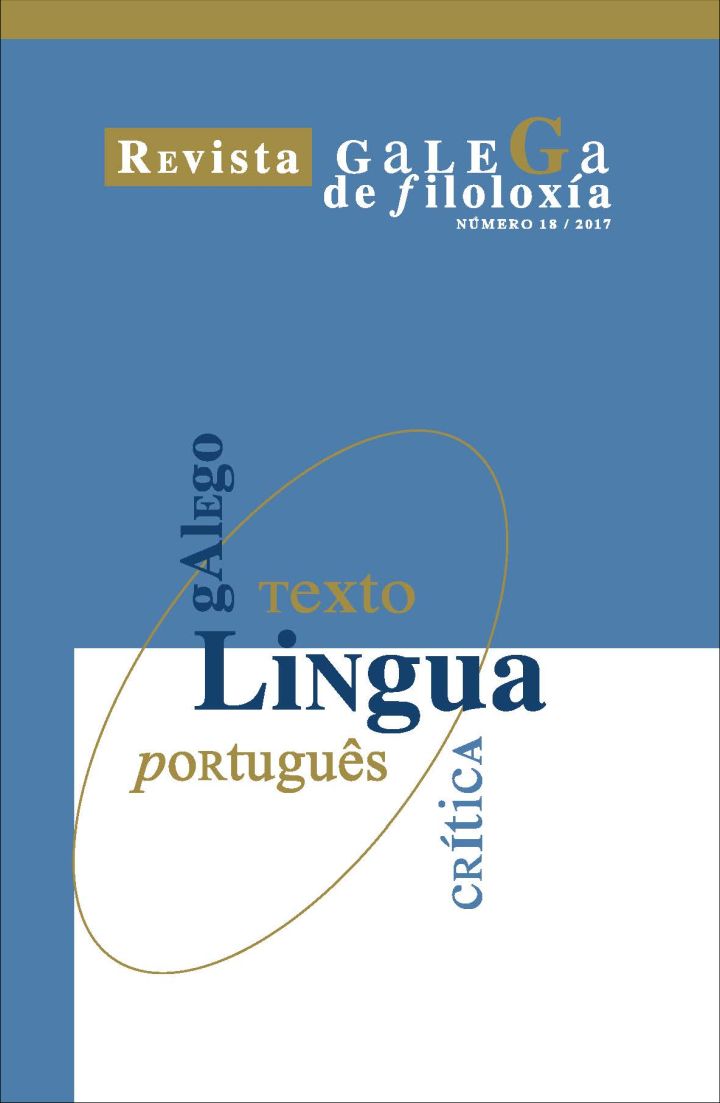A look at u and onde in the Cantigas de Santa María: a quantitative work
Main Article Content
Abstract
The linguistic variability of the adverbs u and onde is one of the most overlooked yet intriguing differences of Galician-Portuguese. I set out to analyze quantitatively the uses of both adverbs, concentrating on the orthographic variation as well as the semantic variation. My analysis has its base in one of the largest collections of lyrical compositions of the Middle Ages, As Cantigas de Santa María, proving that the specific uses of u and onde that were documented at this time in Galician-Portuguese were still marked by the original Latinate variants.
Keywords:
Downloads
Metrics
Article Details
References
Bittencourt, Vanda de Oliveira. (2003). “U e onde nas Cantigas de Santa Maria: caminhos de gramaticalização e de discursivização”. En Leão, A. V. / Bittencourt, V. d. O. (eds.), IV Encontro internacional de estudos medievais (Minas Gerais, 4/7-7-2001), 159-167. Minas Gerais: Belo Horizonte.
Bonfim, Monteiro (1993). Variação e mudança no portugués arcaico: o caso de u e de onde. Palavra, n.1, 96-116. Rio de Janeiro.
Fidalgo Francisco, Elvira (2002). As Cantigas de Santa María. Vigo: Xerais.
Lewis, Charlton, T. (1890). An Elementary Latin Dictionary. New York: American Book Company.
Maurer, Theodoro, Jr. (1959). Gramática do latim vulgar. Rio de Janeiro: Livraria Acadêmica.
Mettmann, Walter (ed.) (1981). As Cantigas de Santa María. Vigo: Edicións Xerais de Galicia, S.A.
Said Ali, M. (1966). Gramática histórica da línga portuguêsa. São Paulo: Edições Melhoramentos.
Snow, Joseph (1977). The Poetry of Alfonso X, El Sabio: A Critical Bibliography. London: Grant & Cutler, Ltd.
Tavani, Giuseppe. (1986). A poesía lírica galego-portuguesa. Vigo: Galaxia, D.L.


